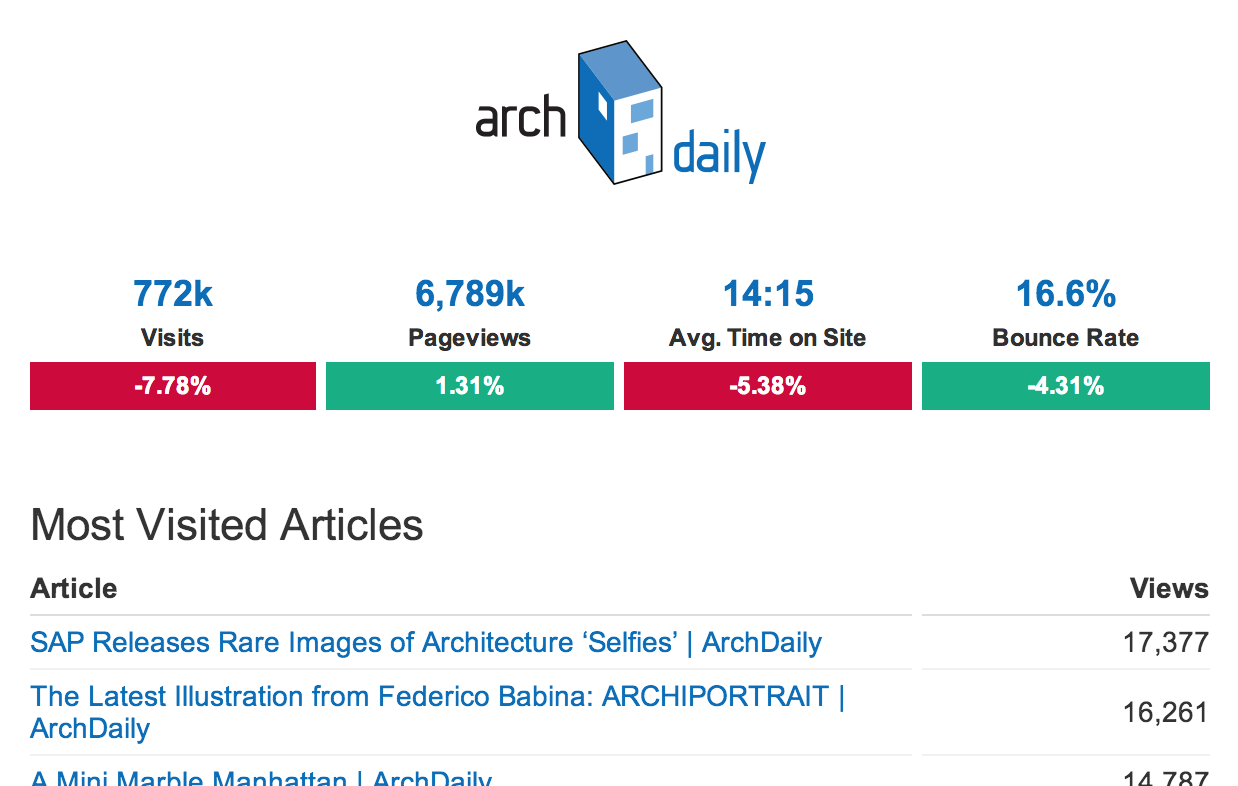
I love getting daily reports from all our services. It’s very useful to see a snapshot of what’s going on with a service.
One day I decided I wanted a daily report from Google Analytics, so I started searching how to get it. First, I set up a Dashboard, then I realized that it could be possible to get this dashboard on my email every day… sweet! Then I got my automatic email and what did I get? An ugly PDF file attached to that email. I was really expecting a little more coming Google.
Then, browsing the web, I found this tutorial: “Building Dashboards Using Google Analytics and Google Apps Script”
It actually inspired me to make a custom email report, using Google Scripts.
The Idea
- Use the script called “Google Analytics Report Automation (Magic)” in order to get data into our Google SpreadSheet
- Write another script, called Mailer that reads the data from the Google SpreadSheet and builds an email
- Configure a trigger based on time (every day)
It’s pretty simple, actually
The Solution
The solution is very specific to our site, but the idea may be applicable to all sites. I think you’ll probably want the same initial part (total pageviews, visitors, average time on site, and bounce rate).
Let’s asume we have the Google Analytics Report Automation (Magic) script running, and the first core report looks like this:
- query1: value1
- type: core
- ids: ga:your_id
- last-n-days: 8
- metrics: ga:visits,ga:pageviews,ga:avgTimeOnSite,ga:visitBounceRate
- dimensions: ga:date
- sheet-name: total
Basicaly, we are fetching visits, pageviews, average time on site and visit bounce rate for the last 8 days. And we want to get this data on a sheet called “total”.
We can run this script (calling the Get Data function) and see what will we get on the sheet total. Nice!
Now, the mailer script:
As you can see, I used a HTML Template, that can be found here:
In these gists I included a most visited articles variable, in order to show how you could do it.
Remember, you can use the Google Analytics Query Explorer to get a better understanding about the Google Analytics API (filters, dimentions, and metrics).
If you have any doubt, don’t hesitate in contacting us!
